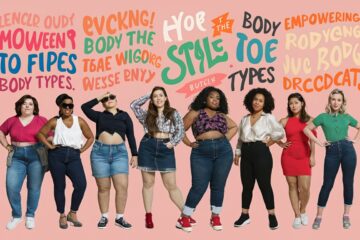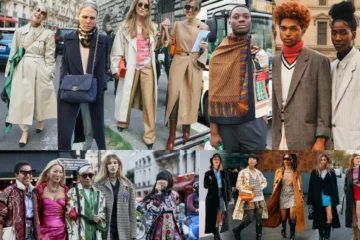Fashion design is an ever-evolving art form, constantly influenced by the world around it. One of the most significant sources of inspiration for designers has been the worlds of art and architecture. Both disciplines, rich in history, culture, and expression, have had a profound impact on the way designers approach clothing, shape silhouettes, and create aesthetic experiences. From the elegant lines of Art Deco to the bold colors of Abstract Expressionism, art and architecture have helped define the visual language of fashion throughout the years.
Art and Fashion: A Symbiotic Relationship
The connection between art and fashion has always been close, with the two fields often drawing inspiration from one another. Fashion designers have long looked to art movements for inspiration, translating visual aesthetics into wearable pieces. One of the most iconic examples of this relationship is the collaboration between designers and artists. In the 20th century, figures like Yves Saint Laurent famously incorporated art into their designs. For instance, in 1965, Saint Laurent’s “Mondrian Collection” featured dresses that mimicked the geometric shapes and bold primary colors found in the works of Dutch artist Piet Mondrian. This fusion of high fashion and fine art turned clothing into a canvas, bridging the two worlds in a strikingly innovative way.
Throughout the years, various art movements have influenced fashion design, with the colors, textures, and shapes used in paintings and sculptures manifesting in clothing. The fluid forms of the Impressionists, the bold colors of Fauvism, and the chaotic geometry of Cubism all served as sources of inspiration for fashion houses and independent designers alike. The influence of Pop Art, especially from artists like Andy Warhol, brought vibrant and playful prints into the fashion world, adding an element of modernity and satire.
Architecture and Fashion: From Structural Forms to Silhouettes
While art serves as an emotional and visual inspiration, architecture has provided a more structural influence on fashion design. The very foundations of architecture—geometry, proportion, and structure—are reflected in the construction of garments. The way a building is designed, with its carefully considered lines, forms, and space, often parallels the way designers approach clothing. The relationship between architecture and fashion is grounded in the shared principles of balance, proportion, and symmetry.
One notable example of architecture’s influence on fashion is the concept of “constructed” garments, where designers create clothing that is rigid, sculptural, and architectural. The work of designers like Coco Chanel, who drew inspiration from the simplicity and structure of modernist architecture, led to the creation of garments that defied the traditional female silhouette. Chanel’s use of the tailored suit was a direct reflection of the clean lines and minimalist design found in contemporary architecture. Likewise, designers like Rei Kawakubo of Comme des Garçons have utilized avant-garde shapes and forms that mimic architectural deconstruction, pushing the boundaries of fashion into new, experimental realms.
In the 21st century, the influence of architecture is evident in the use of bold, geometric patterns and shapes. The rise of digital design and 3D printing has further blurred the lines between the two disciplines. Designers like Iris van Herpen, known for her innovative use of technology in fashion, have created pieces that resemble architectural structures, using 3D printing and sculptural techniques to craft garments that appear as though they have been built rather than sewn. These designs are often inspired by organic and futuristic architectural styles, incorporating fluid forms that resemble the architecture of Frank Gehry or Zaha Hadid.
Fashion as a Form of Artistic Expression
Fashion’s ability to communicate ideas, evoke emotions, and challenge norms has led many designers to see it as an extension of art. Much like painting, sculpture, or architecture, fashion is a form of self-expression and cultural commentary. The collaborative process between fashion, art, and architecture has enabled designers to push creative boundaries and create works that provoke thought and emotion.
In recent years, designers have continued to use fashion to make statements about societal issues, much like artists and architects have throughout history. Fashion exhibitions like “Fashion and Technology” at the Museum of Modern Art in New York have highlighted how fashion intersects with contemporary art and technological advancements. Designers such as Vivienne Westwood have used their collections to make bold political statements, using clothing as a canvas to challenge traditional ideas of power, class, and gender.
The Future: Bridging Art, Architecture, and Fashion
As fashion continues to evolve, the influence of art and architecture is likely to grow even more profound. The rise of digital tools and 3D printing will likely lead to even more experimental and boundary-pushing designs, with fashion becoming more integrated with both the worlds of fine art and architecture. The increasing collaboration between designers, artists, and architects will likely continue to fuel innovation in fashion, ensuring that it remains a powerful and dynamic form of artistic expression.
Moreover, the cross-pollination between these fields suggests that the future of fashion may see a further blurring of lines between the practical and the conceptual. Fashion will continue to reflect not just the trends of the time but also the broader cultural, technological, and artistic shifts happening in society.
Conclusion
The influence of art and architecture on fashion design is undeniable, and it is a relationship that continues to thrive today. Designers borrow from art’s colors, textures, and symbolism while utilizing the structural principles of architecture to create garments that are both visually stimulating and functionally innovative. Whether through collaborations, direct inspiration, or a shared cultural understanding, fashion, art, and architecture continue to shape one another in ways that redefine the boundaries of creative expression. As these disciplines evolve, the intersection of fashion with art and architecture will remain a source of endless inspiration, continually pushing the boundaries of what fashion can be.




